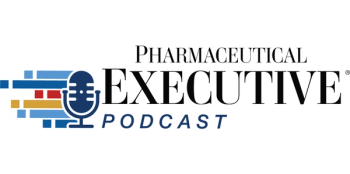"If Metsera’s therapies deliver on their promise, they could become Pfizer’s next Lipitor-scale franchise, echoing the 2000s when one acquisition reshaped the company’s growth trajectory for an entire decade."
- Pharmaceutical Executive: December 2025
- Volume 45
- Issue 9
Pfizer’s Proven Playbook: Buy, Partner, Scale, Spin-Off, Optimize
How the Metsera deal extends Pfizer’s 25-year blueprint for growth.
A Familiar Move in a New Market
In 2025, Pfizer once again reached for its favorite strategic lever: acquisition. The
From Warner-Lambert to Wyeth, Hospira, Medivation, and most recently
The Metsera deal fits squarely within this long-standing pattern, a testament to Pfizer’s discipline in using deals not as one-off events but as part of a recurring cycle of reinvention. Few companies in the pharmaceutical industry have institutionalized change as effectively as Pfizer.
Buying What Others Build
Pfizer’s success has rarely depended on a purely internal R&D engine.
Rather than trying to invent every breakthrough in-house, the company has long pursued a pragmatic philosophy: buy what it cannot efficiently build. Each acquisition is chosen to plug a strategic gap or add a scalable platform.
The 2000 merger with Warner-Lambert was perhaps the most transformative in Pfizer’s history, giving it full ownership of Lipitor (atorvastatin), which went on to become the world’s best-selling drug, surpassing $12 billion in annual sales at its peak and establishing Pfizer as a cardiovascular powerhouse.
The 2009 purchase of Wyeth, executed during the global financial crisis, diversified Pfizer beyond small molecules into biologics, vaccines, and consumer health, bringing blockbusters like Prevnar and Enbrel and the biologic capabilities that still define its portfolio.
Later acquisitions reinforced that pattern: Hospira (2015) expanded Pfizer into sterile injectables and biosimilars; Medivation (2016) added Xtandi, solidifying Pfizer’s oncology franchise; Array BioPharma (2019) strengthened its targeted cancer pipeline; Biohaven (2022) contributed the fast-growing migraine therapy Nurtec ODT; and Seagen (2023) made Pfizer a leader in antibody–drug conjugates (ADCs).
Each transaction shared the same underlying logic, acquire externally validated science and scale it globally. The Metsera acquisition now extends that logic into obesity and cardiometabolic disease, a therapeutic frontier projected by analysts to exceed $150 billion globally by 2035.
Partnership as a Strategic Muscle
If buying innovation is the first leg of Pfizer’s model, partnership is the second. Few companies have institutionalized collaboration as deeply as Pfizer.
Its history of co-marketing and joint ventures stretches back to the 1990s, when the company co-promoted Lipitor with Warner-Lambert before ultimately acquiring it. That partnership not only demonstrated Pfizer’s commercial strength but created the trust that made a full merger possible.
More recently, Pfizer’s alliance with BioNTech during the COVID-19 pandemic redefined what partnership can achieve. A 50–50 collaboration between two companies—one with scientific innovation and the other with industrial scale—yielded Comirnaty, the world’s first approved mRNA vaccine, generating roughly $75 billion in revenue over 2021–2022.
Pfizer also structured its 2019 consumer health joint venture with GlaxoSmithKline to create Haleon plc, later spun off, blending risk-sharing with portfolio discipline. Even the Metsera acquisition includes milestone-linked payments, reflecting Pfizer’s hybrid risk-sharing approach.
For Pfizer, partnership is not an afterthought, it is a strategic muscle. Collaboration allows it to stay nimble, share risk, and access innovation ecosystems faster than competitors tied to traditional ownership models.
Scaling as Competitive Advantage
Pfizer’s ability to execute at global scale remains its defining competency. The company excels at turning promising molecules into worldwide franchises through its unmatched combination of regulatory expertise, supply-chain coordination, and commercial power.
After the Warner-Lambert merger, Pfizer scaled Lipitor past $10 billion in annual revenue within a few years, making it the highest-grossing drug in history. Following the Wyeth acquisition, Prevnar became a universal pediatric vaccine and a multibillion-dollar global standard.
The Hospira deal expanded Pfizer’s sterile-injectables footprint to emerging markets, while the BioNTech partnership showcased Pfizer’s ability to deliver more than three billion vaccine doses worldwide under extreme conditions.
In the case of Metsera, Pfizer aims to replicate that pattern. With once-monthly obesity injections and differentiated oral formulations, the company is positioning itself to challenge Novo Nordisk and Eli Lilly in one of the fastest-growing segments of global healthcare.
Scaling, for Pfizer, isn’t just about distribution, it’s about industrializing innovation with unmatched speed and reliability.
Pruning Through Spin-Offs
Just as Pfizer is disciplined in what it acquires, it is equally deliberate in what it sheds. Spin-offs have been central to its long-term focus and capital efficiency.
In 2013, Pfizer spun off its animal-health division as Zoetis, which later became a $50 billion-plus independent company, an enduring example of value creation through separation. In 2020, it combined its off-patent division Upjohn with Mylan to form Viatris, exiting slower-growth generics while improving profitability.
Two years later, Pfizer completed the spin-off of Haleon, allowing it to exit the consumer-health operating business and focus squarely on innovative biopharma, while gradually selling down its equity stake.
These decisions were not retreats but reallocations, strategic pruning that freed capital for reinvestment in higher-growth areas such as oncology, immunology, and now, metabolic disease. In an era when many pharmaceutical giants chase diversification, Pfizer’s path has been one of strategic simplification.
Optimization: The Quiet Power of Discipline
After the buying and scaling comes the fine-tuning. The fifth element of Pfizer’s playbook, optimization, is less visible but perhaps most vital.
It involves integrating acquisitions, reducing redundancy, and reallocating capital to higher-yield opportunities.
Following the Wyeth deal, Pfizer streamlined overlapping R&D sites and harmonized discovery platforms. After acquiring Hospira, it optimized its global manufacturing network. With Biohaven, it retained the migraine business but dropped unrelated small-molecule programs.
Post-Seagen, Pfizer consolidated oncology R&D to emphasize ADCs and immunotherapy. Even the Metsera acquisition came immediately after Pfizer’s decision to discontinue its internal GLP-1 candidate, danuglipron, underscoring the company’s agility in redirecting investment from internal setbacks to external promise.
A hallmark of Pfizer’s optimization process is its integration culture. The company quickly absorbs acquired organizations into its own operating system, enforcing standardized processes, performance metrics, and decision hierarchies.
In doing so, Pfizer often replaces the legacy culture of acquired firms with its own systems-driven environment. The rationale is speed and alignment: every acquired team is expected to “become Pfizer” within months.
This approach, though sometimes abrupt for incoming employees, ensures operational coherence and accountability across a vast enterprise. For Pfizer’s leadership, cultural assimilation is part of integration, one playbook, one rhythm, one corporate DNA.
Optimization, therefore, is not only financial, it is cultural. It keeps Pfizer lean, unified, and strategically agile even as it absorbs wave after wave of new science.
A Closed Loop of Innovation
Taken together, Pfizer’s model forms a closed loop of innovation, a system that renews itself through deliberate rhythm rather than one-off bursts. The genius of the cycle lies in its balance: buy into high-growth areas, partner to share risk, scale through global reach, spin off mature or low-growth assets, and optimize the portfolio. Then repeat.
Over time, this rhythm has enabled Pfizer to maintain equilibrium between scientific ambition and financial discipline, avoiding both stagnation and reckless expansion. Few large pharmaceutical companies have managed this balance so effectively.
Metsera’s Role in the Next Chapter
The Metsera acquisition comes at a pivotal moment. With COVID-19 vaccine revenues normalizing and the internal GLP-1 program shelved, Pfizer needed a credible entry into the obesity and cardiometabolic market, one that could restore growth momentum and reaffirm its innovation credentials.
Metsera’s once-monthly dosing and emerging oral GLP-1 pipeline offer clear differentiation in efficacy, convenience, and patient adherence. Its milestone-linked acquisition structure reflects the same financial discipline that defined Pfizer’s previous successes.
If Metsera’s therapies deliver on their promise, they could become Pfizer’s next Lipitor-scale franchise, echoing the 2000s when one acquisition reshaped the company’s growth trajectory for an entire decade.
Lessons for the Industry
Pfizer’s consistency offers enduring lessons for every pharmaceutical executive.
- First, treat M&A as a capability, not an event, Pfizer’s integration playbook is as important as its science.
- Second, buy at inflection points; the company’s boldest deals, from Wyeth to Seagen, were made when markets were fearful.
- Third, keep the partnership muscle strong; the BioNTech collaboration proved that shared success can outpace controlled ownership.
- Fourth, prune regularly; divestitures fund focus.
- Fifth, measure success by system efficiency—how fast capital moves from low-growth to high-potential assets.
In short, Pfizer treats adaptability as a process, not a slogan.
The Enduring Advantage
The Metsera deal symbolizes more than Pfizer’s entry into the obesity race, it underscores the durability of a corporate reflex honed over decades. From Lipitor to Prevnar, from Comirnaty to Seagen’s ADCs, Pfizer has built its reputation not by inventing every breakthrough itself but by mastering the art of curating, integrating, and scaling innovation.
In a capital-intensive, fast-evolving industry, that capability, to buy wisely, partner intelligently, scale globally, spin off deliberately, and optimize relentlessly, remains the ultimate competitive advantage.
Metsera may be a new acquisition, but the playbook behind it is anything but. Pfizer has played this tune before and it still knows every note by heart.
About the Author
Thani Jambulingam, PhD, is a professor of food, pharma, and healthcare business at Saint Joseph’s University’s Erivan K. Haub School of Business.
Articles in this issue
12 days ago
A Year of Change12 days ago
Brent Saunders: Eyeing New Horizons12 days ago
The GLP-1 Gold Rush13 days ago
A Defining Period for M&A13 days ago
Is Manufacturing Coming Home?13 days ago
DTC Models and Momentum13 days ago
The Cost of Fixing PharmaNewsletter
Lead with insight with the Pharmaceutical Executive newsletter, featuring strategic analysis, leadership trends, and market intelligence for biopharma decision-makers.




